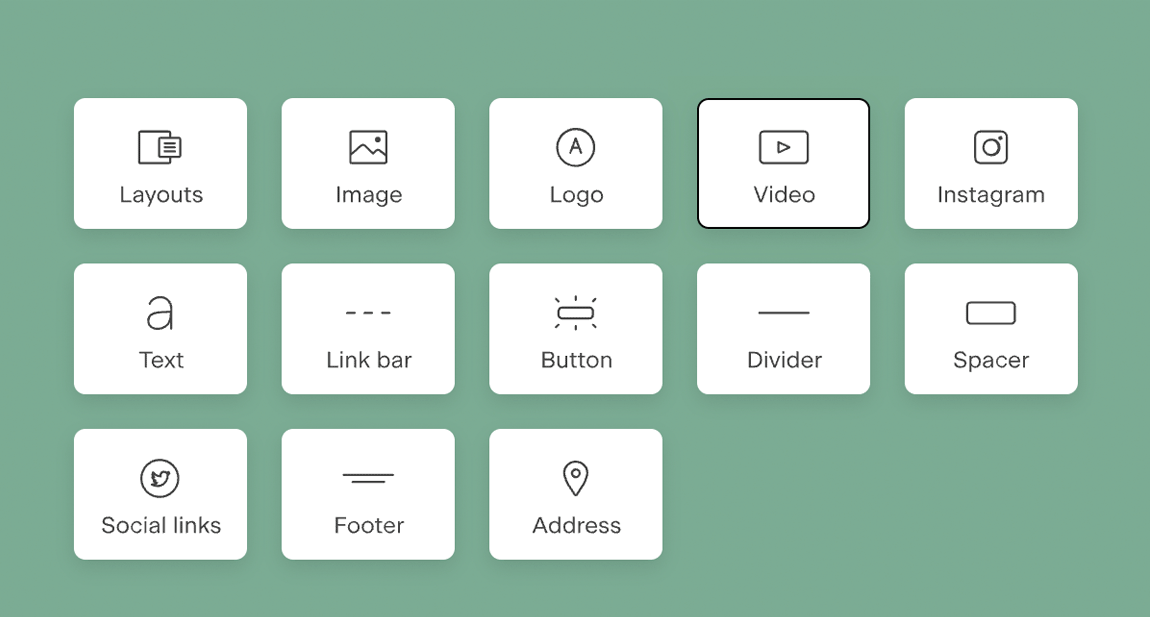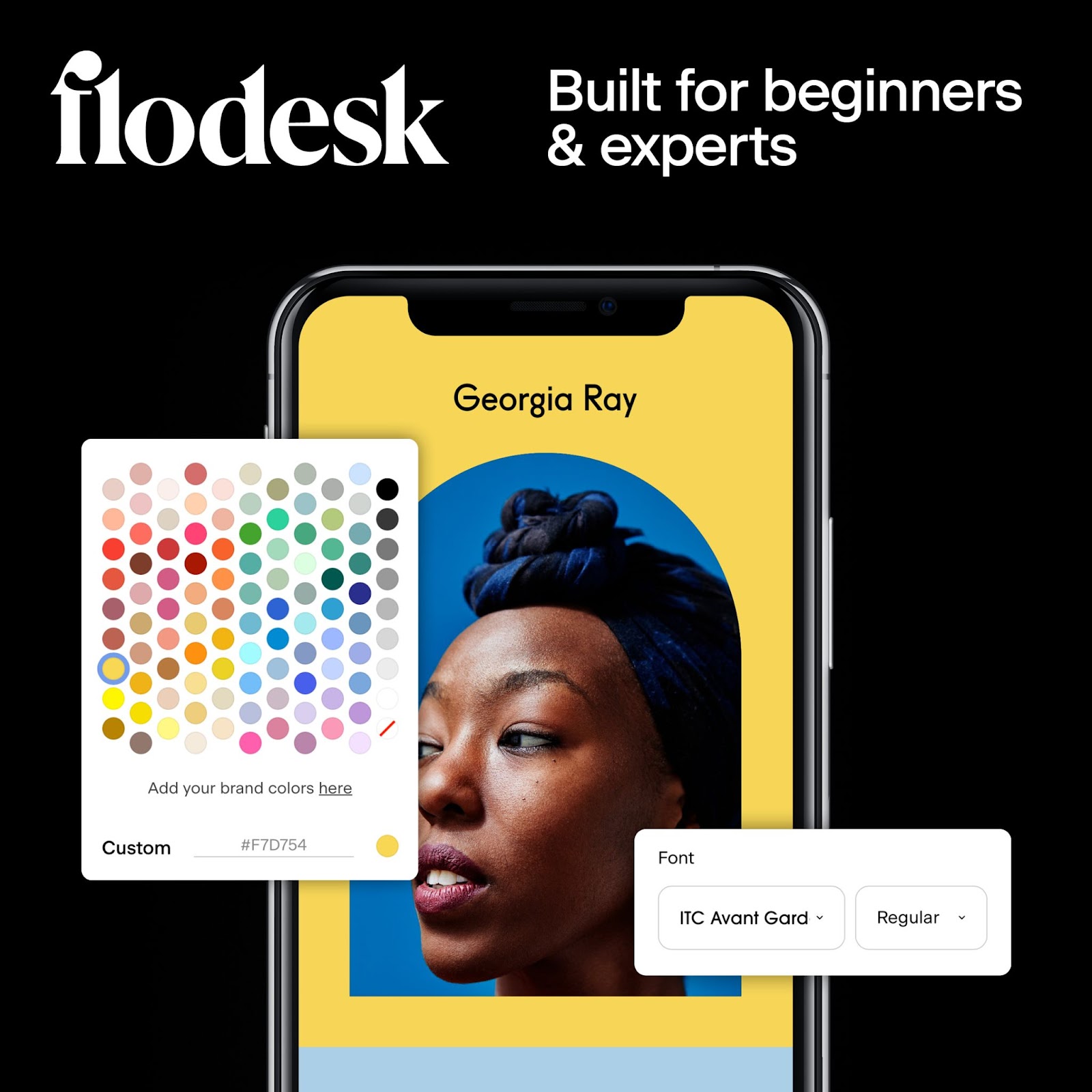How to avoid the spam folder: 13 Ways
Table of Contents Jump to:
Jump to:
Table of contents
TL;DR Want the emails you carefully crafted to land in your subscribers’ inboxes? We’re sharing top tips to avoid the spam folder—and boost your email deliverability.
You’ve customized an email template to match your brand, written stellar copy, and curated an email sequence that delivers a mix of educational, inspiring, and promotional content your subscribers will love. You’ve set up your workflows, and now you—and your workflows—are ready to send your emails.
But do you know whether they’ll actually land in your subscribers’ inboxes? Check out our best tips to avoid the spam folder and learn how spam can affect your email deliverability.
What is spam?
We all know that we don’t want our emails to arrive in our subscribers’ spam folders, but what is spam? What makes one email spam and another worthy of landing in the Primary or Promotions tab of an inbox?
Spam, also known as junk mail, refers to unsolicited emails that get delivered to someone who didn’t give permission for email correspondence. But you also have to consider the broader definition, which is an email or series of emails that people—who do or do not subscribe to your list—don’t want.
So, even if someone subscribed to your list, they can still mark your emails as spam for a multitude of reasons, including:
- You weren’t clear about what subscribers should expect from you on your sign-up form
- You send emails at a much higher frequency than subscribers want (or initially expected)
- You only send promotional emails instead of a mix of promotional and high-value content
You can limit spam complaints by focusing on creating the content your subscribers want and providing value. But also know that sometimes, no matter what you do, your emails will still be marked as spam by people who opted-in to your list.
If the number of spam reports is low and you stay within the acceptable spam report rate (one per 1,000 emails), your sender reputation won’t be affected by those few subscribers who mark your emails as spam.
Pro tip: Regularly clean your list to ensure everyone on it wants to receive emails from you. You can also segment users based on their preferences, so they get only the emails they want, greatly reducing the risk of them marking your emails as spam.
2024 Email compliance changes you can’t ignore
Significant email compliance changes are coming to Gmail and Yahoo. Find out what’s happening, who it impacts, and how to prepare for these changes.
13 ways to avoid the spam folder
The spam folder is the last place you want to be. It’s where emails that your subscribers or recipients (if they never opted-in) send your emails when they provide no value or when your subscribers never agreed to receive emails from you or are no longer interested in your emails.
But you can implement a few strategies to help ensure you stay out of the spam folder:
- Don’t purchase email lists
- Regularly clean your list to keep it healthy
- Don’t embed videos in your emails
- Limit the number (and size) of images
- Avoid spam trigger words
- Don’t use excessive exclamation points
- Use a spell checker
- Include an unsubscribe link in your email footer
- Use double opt-ins
- Stop emailing addresses that have repeatedly bounced
- Try to re-engage inactive subscribers
- Ask subscribers to add you to their contact or address book
- Keep your emails relevant and valuable to your subscribers
1. Don’t purchase email addresses
We’ve already discussed why purchasing email lists is a bad idea in our Email marketing for SMBs: 11 Tips blog post, but it’s worth restating here. When you buy email addresses, you violate your email service provider’s Terms of Service and use email addresses from people who probably don’t want to hear from you.
You don’t know the people on purchase lists, and they have no idea who you are. They never asked to hear from you. And when you email someone who doesn’t know you and is unsure of why they’re getting emails from you, they’ll likely mark your emails as spam.
As Hubspot points out, high-quality email addresses are never for sale, so you’re not doing yourself any favors by purchasing them in the first place.
Pro tip: Grow your list organically using social media and freebies, and above all else, be patient. Quality growth takes time, but it will be worth it when you yield a highly-engaged audience who wants to receive communications from you.
2. Maintain a clean and healthy list
You work hard to build your list and create engaging content to send to your subscribers. But if you’re not regularly cleaning your list, everything from email deliverability to engagement to your sender reputation can drop.
Some subscribers sign up to get a discount and ignore every email after. Others subscribe with one email address but then abandon it or decide they no longer want to receive emails from you (without unsubscribing). They all increase the chances of your emails going to spam and impacting your deliverability.
Abandoned or illegitimate email addresses can cause your emails to bounce. If you send emails to unknown accounts at a rate of more than 5%, internet service providers (ISP) will view you as a spammer and likely send your emails straight to spam.
Bounces and your spam rate can also lower your sender reputation—the score your ISP assigns you based on factors like your send frequency, engagement, and quality of email campaigns. The lower your sender reputation, the harder it is for emails to make it to your subscribers’ inboxes.
To maintain a healthy and clean list, start by:
- Removing subscribers whose email addresses continuously bounce.
- Identifying inactive subscribers (with low open and click rates) and either adding them to a re-engagement sequence or removing them.
Pro tip: Use double opt-in when your subscribers initially sign up to confirm they have a valid email address.
3. Don’t use video, Flash, or JavaScript in your emails
Who doesn’t love cute puppy videos or the hilarious clips that go viral on social media? We love videos, but when it comes to email, try getting creative instead of embedding your video.
Most email clients don’t have the ability or won’t allow subscribers to view rich media (embedded videos or Flash), so even if you embed a video, it probably won’t play or play correctly.
Don’t worry though, you can still add a video link using Flodesk Email. All you have to do is add a video block, upload the link to your video, and voila! You can even add title text and an overlay.
4. Limit how many images you use
At Flodesk, we love striking images and beautiful designs. And while I would love to jam-pack my email with nothing but photos, it’s a big red flag for spam.
If you use one large image (created with something like Canva) as your entire email or too many photos, your email may end up in the spam folder. Additionally, if your image files are too big, it can cause long load times, which creates a terrible experience for your subscribers.
Think about it: when was the last time you waited for an email to load to read it? Or a website? If you wouldn’t wait five seconds for an email to load, your subscribers probably won’t either.
Pro tip: Make your image files as small as possible without sacrificing quality and limit the number of images. This will also help create a balance between text and imagery in your emails.
5. Avoid spam trigger words
Much like the words that make us cringe, there are words in your emails that stand out to spam filters in the worst way. But the good news is that you can avoid the spam folder altogether by carefully choosing your words and avoiding words that trigger spam filters.
Start with your subject line. Instead of stuffing your subject line with spam phrases like, “guarantee” or “free,” get creative and use intriguing or educational words instead. And if you’re not sure what words to avoid, here are a few:
- Free!
- Guaranteed
- Money
- No obligation
- Help
- Winner!
But the words aren’t the only thing that can impact where your email goes—punctuation matters too, which leads me to my next point on using exclamation points.
Pro tip: If you would roll your eyes or immediately think of a used car salesperson when you read your subject line, spam filters will probably do the same and send your email to spam.
Exclamation points can help express excitement, but they are also a red flag for spam filters, especially when you use multiple exclamation points in a row. And when you use too many of them in your subject line, you can be sure your subscribers will send the email to their junk folders.
Instead, use evocative words or phrases to express your excitement. You can also use GIFs or images that clearly show happiness or enthusiasm. Take a look at the image below. She looks pretty happy, right?
Pro tip: It’s okay to use exclamation points now and again, but try using more powerful words than relying on a simple “!” to express emotions.
7. Check your spelling
Aside from making you look unprofessional or unpolished, spelling errors are also a spam trigger. Not to mention, your subscribers likely don’t appreciate them either.
According to a study by the Radicati Group (a technology market research firm), 80% of respondents said that spelling and grammatical errors are the most unacceptable email offense. And with grammar-checking tools like Grammarly, there’s no longer an excuse to send emails rife with errors.
Pro tip: Read your email out loud and use tools like Grammarly to check your grammar and spelling before sending your email to subscribers.
2024 Email compliance changes you can’t ignore
Significant email compliance changes are coming to Gmail and Yahoo. Find out what’s happening, who it impacts, and how to prepare for these changes.
While many tips on this list are simple best practices to help you avoid the spam folder, adding an unsubscribe link to your emails is a legal requirement in many countries. Why? Because subscribers have a right to unsubscribe from your emails whenever they please, easily.
But remember when we talked about maintaining a healthy list? Part of that is allowing subscribers (who are no longer interested in your content) to remove themselves from your list. It can feel uneasy to offer an easy way for subscribers to opt-out. But by adding an unsubscribe link, you can see improvements in your open and click-through rates because your email list is full of people who want to engage.
Pro tip: Make your unsubscribe link or button clear and easy to find. Many email marketers include a link in their email footer, which is where subscribers typically look to find it.
9. Say yes to double opt-ins
Sometimes subscribers sign up for your newsletter to get a discount or to download gated content. But they don’t necessarily want to hear from you beyond that. It’s a harsh reality, but you can prevent these one-off subscribers from sending your emails to spam by sending a double opt-in email first.
Double opt-ins are simply an extra email you send subscribers to ensure they want to join your list by asking them to verify their email addresses. Take a look at mine. It’s simple and makes it easy for subscribers to confirm they want to be on my list.
Subscribers who confirm they want to receive your emails are the ones who will fully engage with your content and be potential customers down the road. And because they want to read your emails, they won’t send your emails to spam. We’ll reiterate here: having a healthy and clean list is one of the best ways to combat emails going to spam.
Pro tip: Make it easy for subscribers to confirm their email addresses by adding a link or Verify button in your email.
10. Don’t email subscribers who repeatedly bounce
Have you ever tried purchasing something without realizing your credit card expired or that you typed in the wrong CVC code? You may try a few more times, but you will probably give up after it repeatedly fails. Take a similar approach to email marketing.
Instead of sending email after email, hoping they’ll eventually get through, stop emailing subscribers who consistently bounce.
Not sure what an email bounce is? There are two types of bounces:
- Soft: A soft bounce occurs when an email reaches the recipient’s email server but can’t be delivered due to a temporary issue like a full inbox. The email address exists and is valid.
- Hard: A hard bounce occurs when an email can’t be delivered to a particular subscriber because their email address is invalid or non-existent.
Bounced emails are obnoxious, but they can impact your sender reputation and deliverability, too. According to Hubspot, bounce rates are a factor ISPs use to determine your sender reputation. So, when you have high numbers of hard bounces, they’ll lower your reputation, which impacts deliverability.
Pro tip: Check your bounce rates to remove subscribers who regularly bounce. Email marketing platforms like Flodesk automatically suppress bounced emails, so you don’t have to worry about sending bounced emails to those subscribers again.
11. Re-engage inactive subscribers
We’ve already talked about subscribers who join your list with no intention of engaging with your content or making any purchase—the ones who send your emails to the junk folder.
But there are also the ones who aren’t interested in your emails, but instead of unsubscribing or sending them to spam, they ignore your emails altogether.
When you send emails to these subscribers, you risk low deliverability, low engagement rates, and an increase in your emails landing in spam folders. ISPs may deliver your emails, but they’ll go directly to the subscribers’ spam inbox, so recipients never see them. And the more emails that go to spam, the more impact it has on your sender reputation and deliverability.
But before you remove them from your list, try re-engaging them with a compelling re-engagement sequence. We’ve got you covered! Check out our blog on how to write a re-engagement email.
Re-engagement emails are a series of emails meant to get your inactive subscriber to re-engage with you and your content. A re-engagement email can provide insights into what went wrong and how you can get subscribers active again. Common reasons subscribers go inactive include:
- You send them too many emails or too often
- They thought they were signing up for something different
- They only wanted a discount code
- They wanted access to gated content only
Create a re-engagement sequence to address the above and offer subscribers a chance to set their preferences, offer feedback, and even get a discount.
Pro tip: Identify inactive subscribers and add them to a segment. Create a workflow specifically for that segment to re-engage them.
12. Ask users to add you to their address books
Did you know your email has an address book? Yep! And most spam filters will allow you to whitelist—or approve email addresses—by adding them to your email address book.
So, if you want to stay out of the spam inbox, you can use this tactic with subscribers by gently asking them to add your email to their address book. But make sure you’re giving them a reason to do so. Check out a few suggestions:
- Add us to your address book, so you never miss a good deal, insider tips, and exclusive content.
- Want first access to our courses, personalized guides, and more? Add us to your address book!
When a subscriber whitelists you, spam filters will loosen up a bit so you can ensure your subscribers receive your newsletters.
Pro tip: In your welcome email, ask subscribers to add you to their email address book to whitelist your address and reduce the chances of your email going to spam.
13. Create hyper-relevant and valuable emails
When it comes down to it, the best way you can keep emails in the inbox is to send valuable, personalized emails your subscribers will love. Sure, I’d love to promote my ebook or services in every email, but my subscribers would quickly hit the spam button and move on.
Instead, create a mix of promotional, educational, and inspiring emails that help foster genuine relationships with your subscribers. It’s like a good book you can’t put down—when it’s so compelling, intriguing, or valuable, we can’t help but read on. Make your emails the same way.
Rethink your emails
Changing how you craft emails can be hard, but if you notice that you’re getting more spam reports, you might want to switch things up. These tips are a great place to start.









